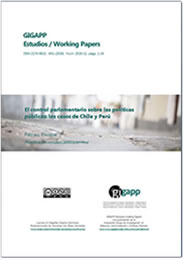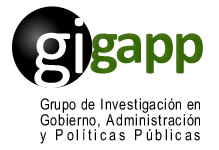Una propuesta de postburocracia: Un modelo burocrático y empresarial
Resumen
El objetivo de este texto es presentar una propuesta de modelo postburocratico que denominamos modelo buroempresarial. Este modelo propuesto sería una combinación del actual modelo burocrático con el modelo de carácter empresarial. Para hacer esta propuesta se parte de cuatro principios: - Hay elementos conceptuales del modelo burocrático que encajan a la perfección con la filosofía y funciones de la Administración pública. Una parte del modelo burocrático no se puede soslayar si se quiere evitar caer en la discrecionalidad, el clientelismo y la inseguridad jurídica e institucional. - Las administraciones públicas del futuro no pueden afrontar con el modelo burocrático sus retos de futuro, en un contexto de gobernanza compleja y con un posible incremento de sus competencias. El modelo burocrático es rígido y poco acorde con las necesidades de gestión de los servicios públicos, de operar en red y con sofisticados sistemas tecnológicos. Hace falta introducir en los ámbitos de gestión pública un modelo empresarial ordenado. - Ambos modelos pueden convivir si se definen claramente sus perímetros organizativos y se establecen las pautas de relación entre ambos. Sería un complejo sistema de equilibrios pero que podría funcionar en la práctica. - El actual modelo de Administración pública es un monstruo ecléctico en el que su base es el modelo burocrático mal implementado, al que se han añadido piezas del modelo gerencial y piezas del modelo de gobernanza. Entre estos tres modelos, que conviven de forma caótica, reaparece entre sus resquicios el antiguo modelo clientelar. El clientelismo es muy resistente, ya que es la forma natural de organización humana, y aprovecha los momentos de crisis o la falta de consistencia de los modelos para renacer. En estas condiciones afirmar que la Administración pública actual posee un modelo burocrático es una impostura ya que su diseño responde a tensiones conceptuales tan diversas que no atesora realmente ningún modelo sólido y solvente. La parte central de este estudio es normativa en la que se presenta la propuesta de mo-delo buroempresarial (apartado 3). Antes se hace un sintético repaso a los modelos históricos que han ido superponiendo en las Administraciones públicas: modelo de patronazgo o clientelar, modelo burocrático, modelo gerencial y modelo de gobernanza (apartado 1). El resultado final es una combinación de modelos que debilitan concep-tualmente a la Administración pública y que le dificultan tanto su aportación de seguridad jurídica e institucional como la eficacia y la eficiencia en la prestación de servicios públicos. En el apartado 2 se hacen unas reflexiones sobre los posibles modelos de futuro de la Administración pública. El modelo propuesto buroempresarial es un intento de dar respuesta a las demandas de estos escenarios de futuro.
Descargas
Derechos de autor 2017 Carles Ramió-Matas

Esta obra está bajo licencia internacional Creative Commons Reconocimiento-NoComercial-CompartirIgual 4.0.
Aquellos autores/as que tengan publicaciones con esta revista, aceptan los términos siguientes:
a. Los autores/as conservarán sus derechos de autor y garantizarán a la revista el derecho de primera publicación de su obra, el cuál estará simultáneamente sujeto a la Licencia de reconocimiento de Creative Commons Attribution-NonCommercial-ShareAlike 4.0 International (CC BY-NC-SA 4.0) que permite a terceros compartir la obra siempre que se indique su autor y su primera publicación esta revista.
Con esta licencia de acceso abierto, los lectores (usuarios) pueden:
- Compartir — copiar y redistribuir el material en cualquier medio o formato
- Adaptar — remezclar, transformar y construir a partir del material
Bajo los siguientes términos:
-
Atribución — usarios deberán dar crédito de manera adecuada, brindar un enlace a la licencia, e indicar si se han realizado cambios. Puede hacerlo en cualquier forma razonable, pero no de forma tal que sugiera que usted o su uso tienen el apoyo de la licenciante.
-
NoComercial — usuarios no puede hacer uso del material con propósitos comerciales.
-
CompartirIgual — Si remezcla, transforma o crea a partir del material, usuarios deben distribuir su contribución bajo la misma licencia del original.
-
Sin restricciones adicionales: los usuarios no pueden aplicar términos legales o medidas tecnológicas que restrinjan legalmente a otros de hacer cualquier cosa que permita la licencia.
b. Los autores/as podrán adoptar otros acuerdos de licencia no exclusiva de distribución de la versión de la obra publicada (p. ej.: depositarla en un archivo telemático institucional o publicarla en un volumen monográfico) siempre que se indique la publicación inicial en esta revista
c. Se permite y recomienda a los autores/as difundir su obra a través de Internet (p. ej.: en archivos telemáticos institucionales o en su página web) antes y durante el proceso de envío, lo cual puede producir intercambios interesantes y aumentar las citas de la obra publicada. (Véase El efecto del acceso abierto).



